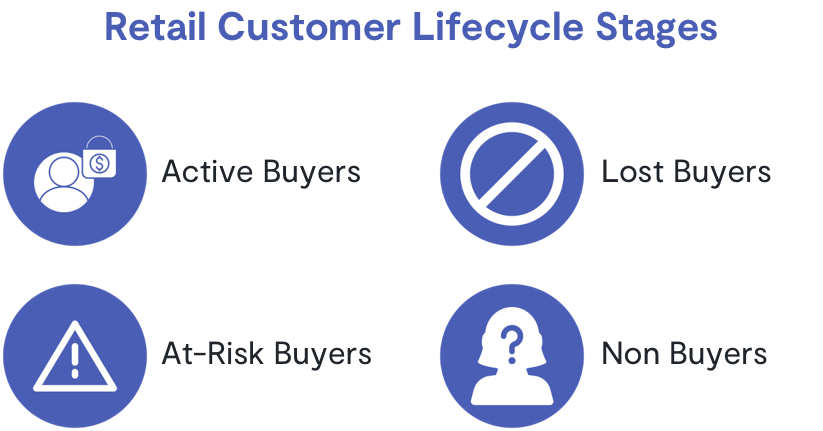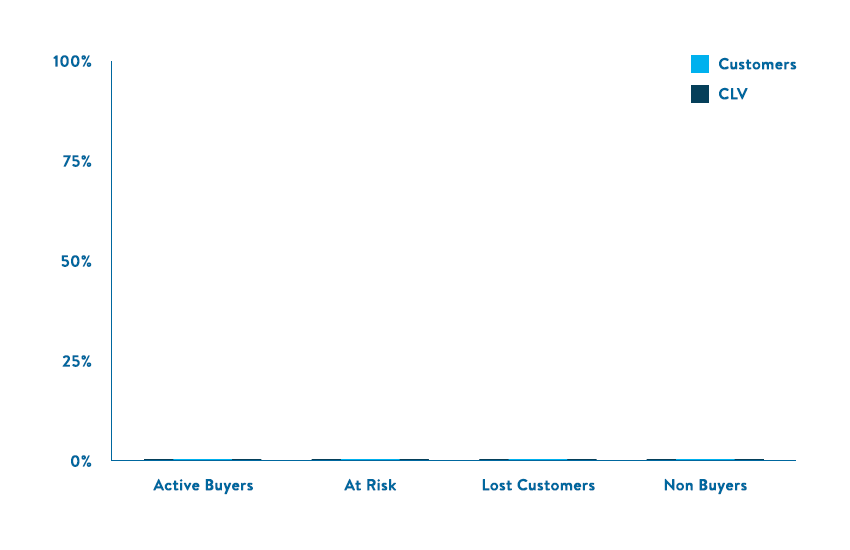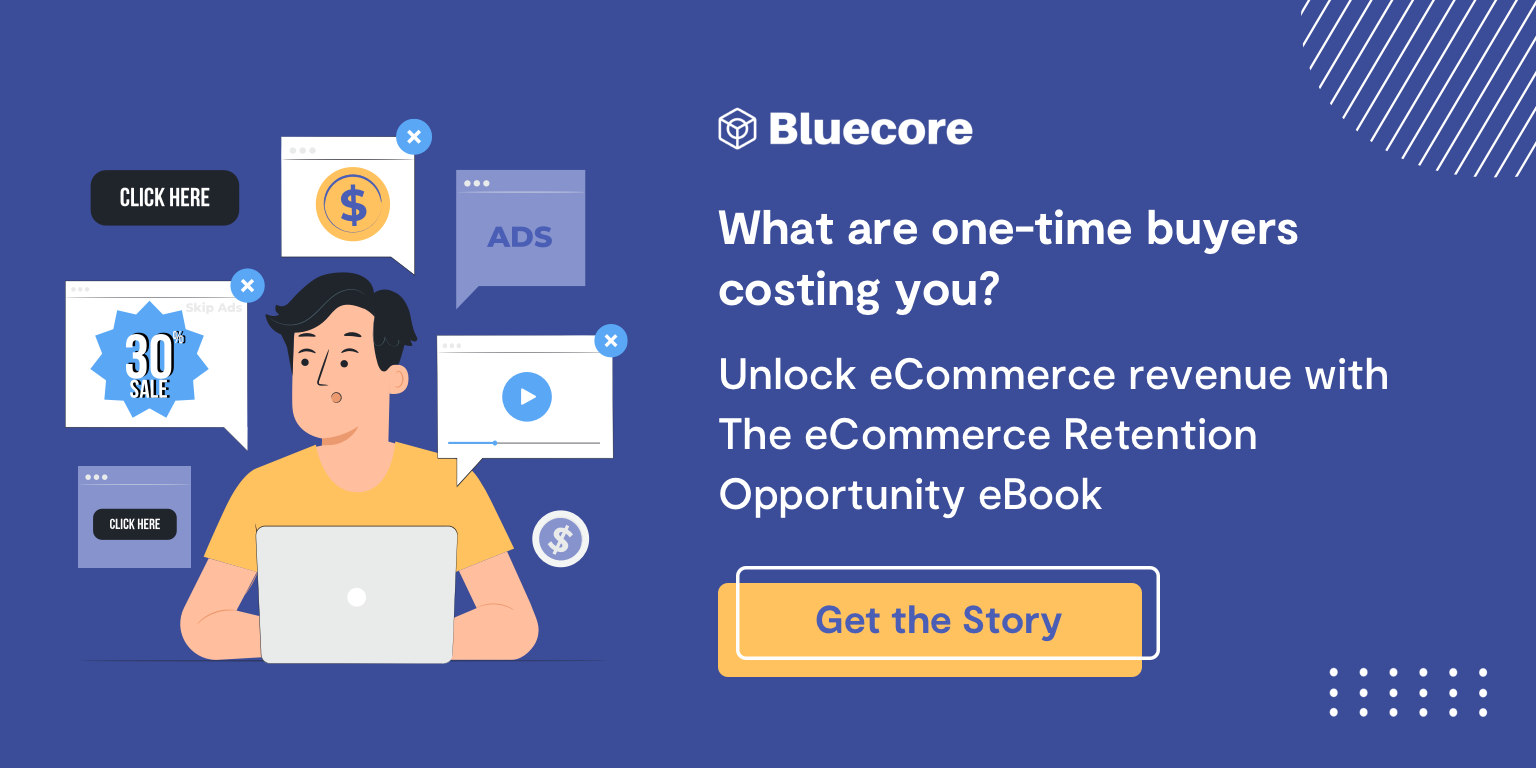
The Guide to Retail Customer Lifecycle Marketing
As a retailer, building and growing customer relationships is fundamental to your success. It’s not difficult to understand why – in an increasingly competitive environment, retailers need to deliver continuously enhanced value to their customers. In practice, this means either creating a seamless, value-added experience or sacrificing your margins in exchange for a higher volume of sales.
Sacrificing your margins certainly isn’t an attractive proposition – so, the race is on for retailers to deliver unmatched value through the customer experience. One way to accomplish this goal is to keep a pulse on the customer journey through a practice called customer lifecycle marketing.
Customer lifecycle marketing offers a way to better tailor your personalized offers to a shopper’s needs and motivations at specific points in time, boosting your conversions. However, the process for building a customer lifecycle marketing strategy isn’t straightforward – so let’s get started by defining what it is and why it’s important.

What is the Customer Lifecycle?
The customer lifecycle describes the stages that customers go through in their lifetime relationship with a brand. This process is not always a linear, fixed journey – retail marketers have the power to influence the customer lifecycle through informed outreach.
This means using data to engage with customers differently based on where they fall in the customer lifecycle. In the world of retail marketing, we break the lifecycle into four primary stages: Active buyers, at-risk buyers, lost buyers and non buyers.

You can map customers to one of these four phases based on their buying behaviors. Then you can use that information to create a personalized marketing experience targeting customers according to their lifecycle stage.
Let’s explore how each group behaves in more detail, and how your team should engage with them.
- Active buyers – Active buyers are the bread and butter of retail success. These existing customers have purchased a product at least once and are likely to buy again. Ensuring active buyers stay engaged and don’t become at-risk must become a fundamental part of your strategy. For this reason, your team should create personalized outreach that keeps them in the active buying cycle by encouraging them to take beneficial actions such as increasing their purchase frequency or expanding the size of each purchase.
- At-risk buyers – At-risk buyers were once active buyers, but they fell out of their typical buying cadence, as determined by their individual purchasing patterns. This could be for a variety of reasons, such as using your product or service less often, or having a competing brand pique their interest. To prevent at-risk buyers from becoming lost buyers, consider refining nurture campaigns with impactful personalized product recommendations or sweeten the deal with a strategically delivered, value-based offer.
- Lost buyers – When you can’t bring an at-risk buyer back into the fold, they become a lost buyer. However, this doesn’t mean they’re no longer of value – quite the contrary. In fact, we’ve found it’s easier to win back lost buyers using strategic marketing outreach than it is to convince a non-buyer to become a new customer. With a well-designed reactivation campaign, you can inspire them to become active, loyal customers again.
- Non buyers – Non buyers are consumers who are known to your brand but haven’t purchased anything yet. Interestingly, they tend to engage at a similar rate as active buyers but are reluctant to place their first order. Your marketing team needs to give them a firm push to convert with outreach like a browse abandonment or low inventory email to instill a sense of urgency and drive that first purchase. Afterwards, you simply need to maintain them as an active buyer.
Of course, this list is not exhaustive. For example, one approach we’ve found extremely effective is changing creative in emails based on lifecycle stage. Specifically, you might send the same best seller email to all of your customers, but add in a banner offering free shipping for at-risk and lost buyers (but not for active buyers) to entice them to purchase.
Ultimately, customer lifecycle marketing can help you add value for customers based on their needs at any given point in time. Beyond allowing you to talk to groups of customers in different ways based on their unique needs, the overarching goal of these activities should be to convert more customers into active buyers.
The Value of Customer Lifecycle Marketing
Clearly, targeting customers based on their lifecycle stage helps retailers create personalized outreach that boosts conversion rates. But how will personalizing outreach based on these four key segments affect your bottom line? After analyzing close to 200 retailers, we found the average lifetime value of each segment.

In this case, the light blue bars represent the percent of customers that fall into each lifecycle stage and the dark blue bars represent the predicted revenue contribution of each group.
Using the model above, we can see that nearly 60% of revenue is expected to come from active buyers. On the one hand, that’s a good thing. But on the other hand, that revenue is only coming from about 15% of customers. That means that 40% of potential revenue going forward sits with the overwhelming majority of customers. And if you could convert those customers to active buyers, you would not only chip into that additional revenue, but the predicted customer lifetime value from that group would also likely increase.
For instance, one apparel retailer who conducted this type of customer lifecycle analysis found that converting just 5% of its non buyers would lead to $225k in near-term revenue and converting just 1% of its lapsed customers would lead to $288k in near-term revenue.
Designing a Lifecycle Marketing Strategy
In order to power these types of activities, you first need to conduct a customer lifecycle analysis. As part of this analysis, you need to map out where your customers fall across the four main lifecycle stages.
To get the most out of these efforts, you’re best off using predictive technology so that you can determine lifecycle stages based on each customer’s unique buying cadence instead of using static rules. With the right predictive model, you’ll find that some customers might be labeled at-risk after not making a purchase in 60 days while others might not be labeled at-risk until not making a purchase in 90 days. This difference allows you to know when you need to speak to customers and how you should speak to them.
You can also layer in other predictive models to the lifecycle analysis, such as predicted customer lifetime value, to provide a more detailed segmentation. With customer lifetime value, for instance, this additional layer of data allows you to determine how much revenue you can expect to see (or potentially lose in the case of at-risk and lost buyers) from each group. In turn, this revenue modeling can help you prioritize which group to target first. What’s great about this layering is that even if you want to email the same content to your 90th percentile active buyers as your 10th percentile active buyers, you can use these predictive models as a means to test and track audiences.
What Activities Are Important for Customer Lifecycle Marketing?
Once you do a customer lifecycle analysis, you should have a wealth of data to inform your marketing strategy. Specifically, you’ll know the lifecycle stages into which your customers fall so that you can engage with them accordingly and you’ll know what your revenue spread looks like so that it’s clear which group you should prioritize.
From there, it’s time to put your customer lifecycle marketing into action to increase customer engagement, boost loyalty among active buyers and hopefully convert more at-risk, lost and non buyers into the active buying group. Again, you should prioritize which group you target first based on the revenue spread. Depending on what you find, you might take on some of the following activities.
Retain and Increase Loyalty Among Active Buyers with Behavioral Triggers
When it comes to customer retention and even increasing customer loyalty, behavioral triggers are your best friend. These triggers, including cart abandonment, search abandonment, product abandonment and post-purchase, send based on actions customers take on your site. As a result, they’re an ideal way to target the customers who are already actively engaging with your products. Notably, these triggers tend to boast high performance, with open rates easily topping 35% for retailers of all kinds and sizes.
Beyond behavioral triggers, other ideas for how to best engage with this group include intelligent replenishment offers and special offers (e.g. free services or early new arrivals previews) for your most loyal customers.
Whatever route you go, the goal is to nurture your active buyers to keep them in that group for as long as possible.
Save At-Risk and Lost Customers with Merchandising Triggers
Next, we have at-risk and lost customers, and you have to market to this group differently because they require a unique type of messaging and offers to entice them to come back. Additionally, the behavioral triggers you use to engage with active buyers won’t work on customers in these groups because they aren’t actively engaging on your site.
In this case, it’s all about merchandising triggers like price decrease, new arrivals and back in stock alerts. These triggers are primarily dependent on changes in your product catalog. From there, you can take into account customer behavior to determine the best audience to notify about those changes.
Specifically, merchandising triggers are a good fit for at-risk and lost customers because they allow you to look back over a longer period of time to determine customer interest in different products and categories when defining your audience. For example, when new heeled boots hit your catalog, you might send a new arrivals trigger to customers who have a predicted affinity toward heeled boots and/or browsed heeled boots in the past year. That ability to look back in time allows you to hit customers even when they haven’t interacted with your products recently.
Bring Non Buyers Into the Fold with Personalized Batch Sends
Finally, we have non buyers, who yet again require a different type of messaging. In this case, you may be able to send behavioral triggers if customers in this group are engaging on your site. You may also be able to send a few merchandising triggers to this group if their on site engagements provide enough information.
However, many people in this group will not have engaged with your site enough to provide the data needed to power these types of triggers. Because of that, the real bread and butter for turning non buyers into active customers is batch sends — but not just any batch sends.
In an effort to create as personalized an experience as possible, you should target this group with personalized batch sends that feature dynamic product recommendations, content and offers and that learn over time based on how each customer does or does not engage. For non buyers, you can run high level predictive recommendations based on product categories they’ve browsed or, if you’ve attracted these customers based on lookalike modeling, you can use predictive models to determine likely affinities toward certain products based on their lookalikes in your active buying group. In general, the key is to get as personalized as possible in order to get the most out of these batch sends.
Put Your Customer Data to Work
Conducting a customer lifecycle analysis and adjusting your marketing activities accordingly is just one of many ways to put your customer data to work, but it’s one that can’t be ignored. Taking on these efforts not only creates a better, more personalized experience for your customers, but it can also lead to significant revenue increases — and those are two benefits that no retailer can afford to miss.





